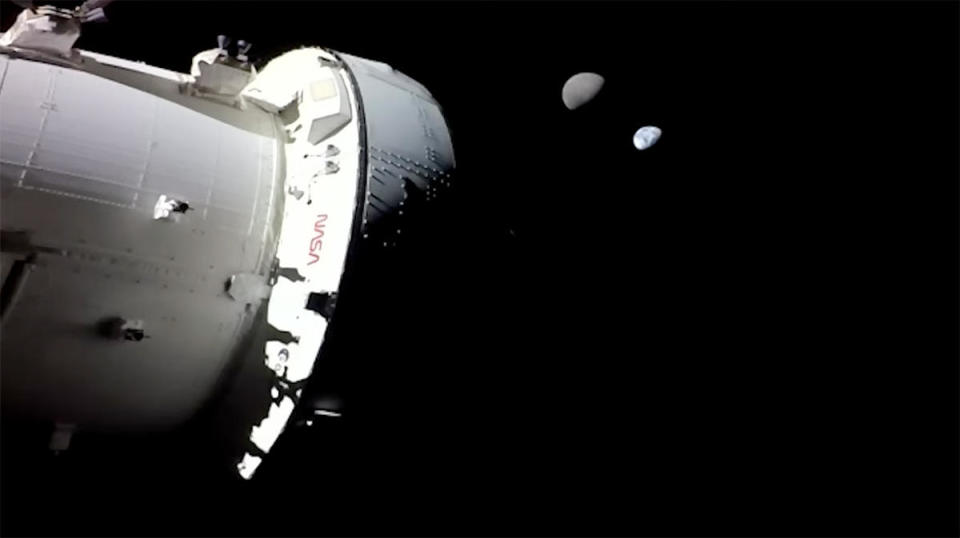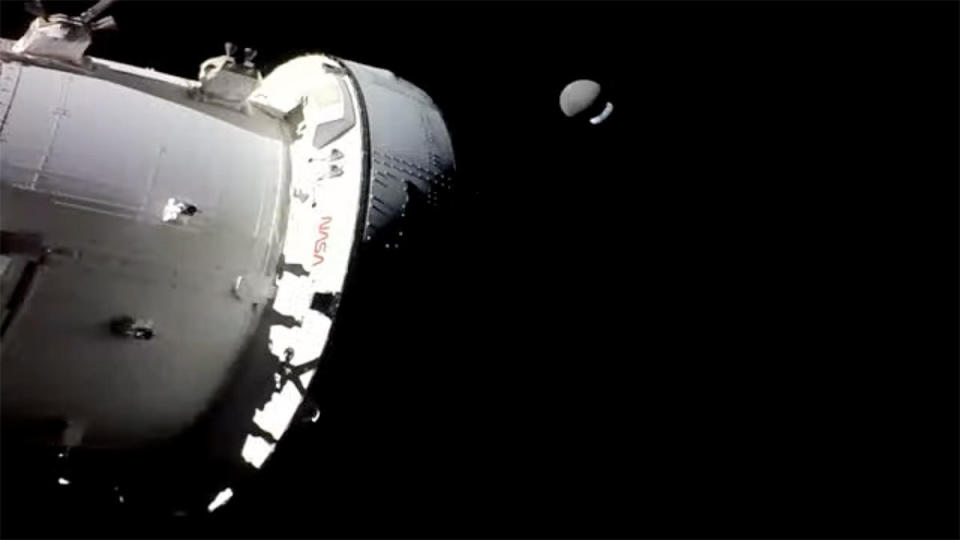Artemis 1 moonship in good shape midway through mission
At the halfway point in NASA's Artemis 1 mission, the unpiloted Orion moonship is chalking up a near-flawless flight, mission managers said Monday, beaming back spectacular images of Earth disappearing from view as it was eclipsed by the moon.
"The spacecraft is operating just tremendously well so far, and we're really happy with its performance overall across all the subsystem areas," said Howard Hu, NASA's Orion program manager at the Johnson Space Center in Houston.

Only a handful of minor technical issues have cropped up since the November 16 launch, including now-understood "funnies" with the capsule's star tracker navigation system, erratic coolant flow in one thermal control system loop due to a gas bubble and a radiation-induced flight computer reset.
The computer automatically rebooted itself as programmed and is working normally. Mission Manager Mike Sarafin called the glitch "a gift handed to us from the flight environment," because it confirmed the system's ability to recover from a radiation hit "as it was designed."
Only one "anomaly team" is still on the job as engineers troubleshoot a minor glitch with a power distribution system component. But Sarafin said the issue is not a serious problem "because we have appropriate levels of redundancy. ... We just don't quite understand what the hardware is telling us."
Monday afternoon, the Orion capsule reached a point in its "distant retrograde orbit" around the moon some 268,562 miles from Earth — nearly 43,000 miles above the lunar surface — setting a new distance record for a human-rated spacecraft. The previous record of 248,654 miles, set by the Apollo 13 crew in 1970, was surpassed Saturday.
A few hours earlier Monday, a camera mounted on one of Orion's solar arrays captured a view of the blue-and-white Earth slowly passing behind the moon in a deep space eclipse, disappearing from view in a stunning celestial display.

"I was in the control center for a majority of those images, the ones including the Earth and the moon, and it's really hard to articulate what the feeling is," said Flight Director Rick LaBrode. "It's just amazing to be here and see that."
If all goes well, Orion will break out of the distant retrograde orbit with a rocket firing Thursday, setting up a close lunar flyby next Monday. That maneuver, in turn, will fling the spacecraft back toward Earth for a high-speed re-entry and splashdown in the Pacific Ocean west of San Diego on December 11.
NASA plans to follow the Artemis 1 mission by launching four yet-to-be-named astronauts on a shakedown flight around Earth and the moon in late 2024, setting the stage for two astronauts to land near the lunar south pole in the 2025-26 timeframe.
Sarafin said NASA would revisit target dates and possible crew assignments for the Artemis 2 mission after the Artemis 1 test flight is complete. In the meantime, Hu said, "our performance across the board continues to be outstanding."
"We continue to ... generate 20% more power than we really need, we still have a tremendous amount of propulsive capability," he said. "We are looking at other performance measurements across the spacecraft, and those are all going very well. So really happy where we are halfway through the mission."
Condé Nast traveler reveals "The 23 Best Places to Go in 2023" list
The rise and success of the first Black female billionaire Sheila Johnson

